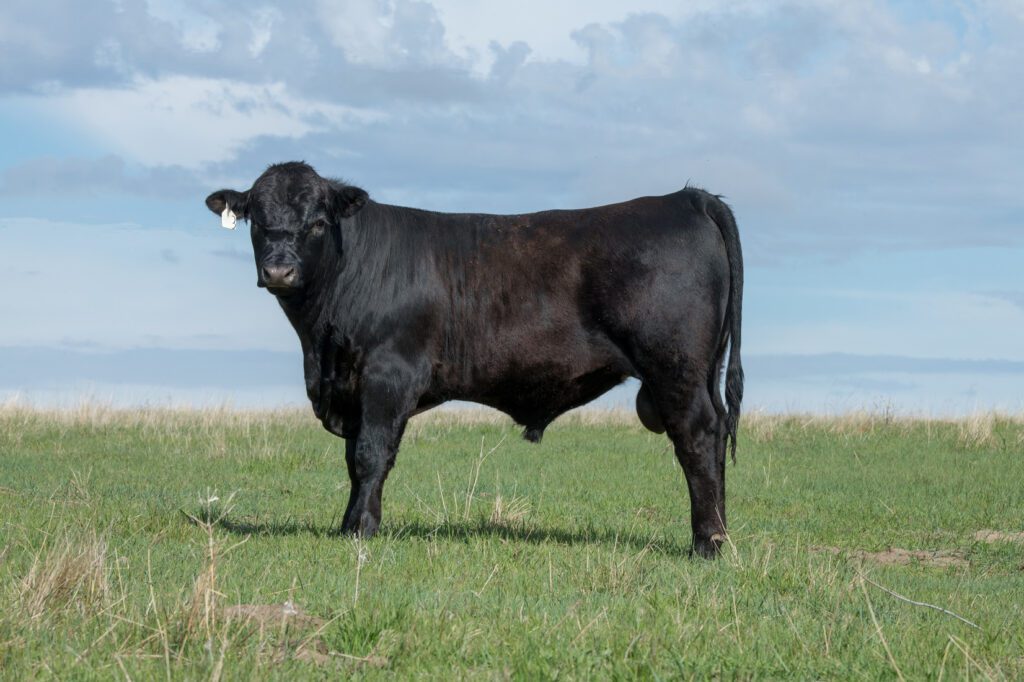Given bull sale season is underway, addressing a few Frequently Asked Questions (FAQs) might prove helpful as you begin to consider what bull(s) to buy this spring and the tools you use to select them.
1. I keep my own replacement heifers but also retain ownership on cattle through the feedyard. How can I keep cow weight down but ensure that hot carcass weights do not go down?
Balancing maternal and terminal characteristics can be tricky. If you want to keep your own replacement heifers and you don’t want to either use multiple bulls (with multiple breeding pastures or an investment in parentage testing) or utilize AI (with the potential for sexed semen), then the best solution is to select a herd bull that optimizes mature weight and carcass weight. Many breeds have EPD for both of these traits, making selection for both possible. Ideally this would be done based on an economic index that assumes replacements will be kept and culls along with steers sold. Combined indexes like $C for Angus or API for Simmental are designed to optimize maternal traits like mature body weight with terminal traits like carcass weight to maximize profit.
2. Uniformity of calves is important to me (and to buyers of my feeder calves). I generally try to buy half-sib bulls to increase uniformity. Is this the best approach?
No, because this method is truly a gamble. Half-sibs share 25% of their alleles on average, but a specific pair of half-sibs can share anywhere from 0-50% of their alleles meaning that two half-sib bulls could be completely different in terms of their genetic potential. A better strategy is to select bulls that have similar EPD profiles for the traits where uniformity is desired.
3. I buy Angus bulls and generally request that the breeder send me the genomic percentile ranks, EPD, adjusted weights, and ultrasound scans. The data doesn’t always agree (genomic percentile ranks point me in a different direction than the EPD and the EPD point me to a different direction than the scan data). Why? Which should I believe?
For making selection decisions, the EPD is the best tool. Every other source of data for a trait (the adjusted phenotype, the genomics, the pedigree, etc.) is already included in the calculation of the EPD. Phenotypes like weights and scans are affected by both genetics and environment. Genomic profiles by themselves do not account for the bull’s own performance. Only the EPD brings all those pieces together and appropriately weights them.
4. My heifers need to calve unassisted given I work off-ranch. I keep back my own replacement heifers as well. How do I select bulls to make sure their calves, and their daughters’ calves, will come unassisted?
Calving ease EPD are going to be the most effective in this situation. Calving ease direct EPD are an estimate of how easily a bull’s calves will be born when he is bred to heifers. Calving ease maternal EPD are an estimate of how easily a bull’s daughters will give birth when they have their first calf. While it may be tempting to select on birth weight, as birth weight is an indicator of calving ease, it does not tell the whole story. In addition, birth weight records are used to calculate calving ease EPD and selecting on both will not improve calving ease more than selecting on calving ease alone.
5.I generally try to select bulls with large scrotal circumference to increase fertility in the heifers I keep back. Is this the best approach to improve fertility in my herd?
There is evidence that selection for larger scrotal size leads to decreased age of puberty in daughters. However, for taurine breeds, females reaching puberty early enough is not the concern it once was. Scrotal circumference is not a good indicator of female fertility (age at conception, sustained fertility), particularly for taurine breeds. The scrotal circumference of a sire has little relationship with heifer pregnancy rate or sustained fertility of his daughters. Selecting on heifer pregnancy or stayability EPD would yield much greater genetic gains in female fertility.
For more information on beef cattle genetic selection tools, go to www.eBEEF.org.
SOURCE: University of Nebraska – Lincoln, Drew LaKamp, UNL Ph.D. Student
Photo Credit: Troy Walz








